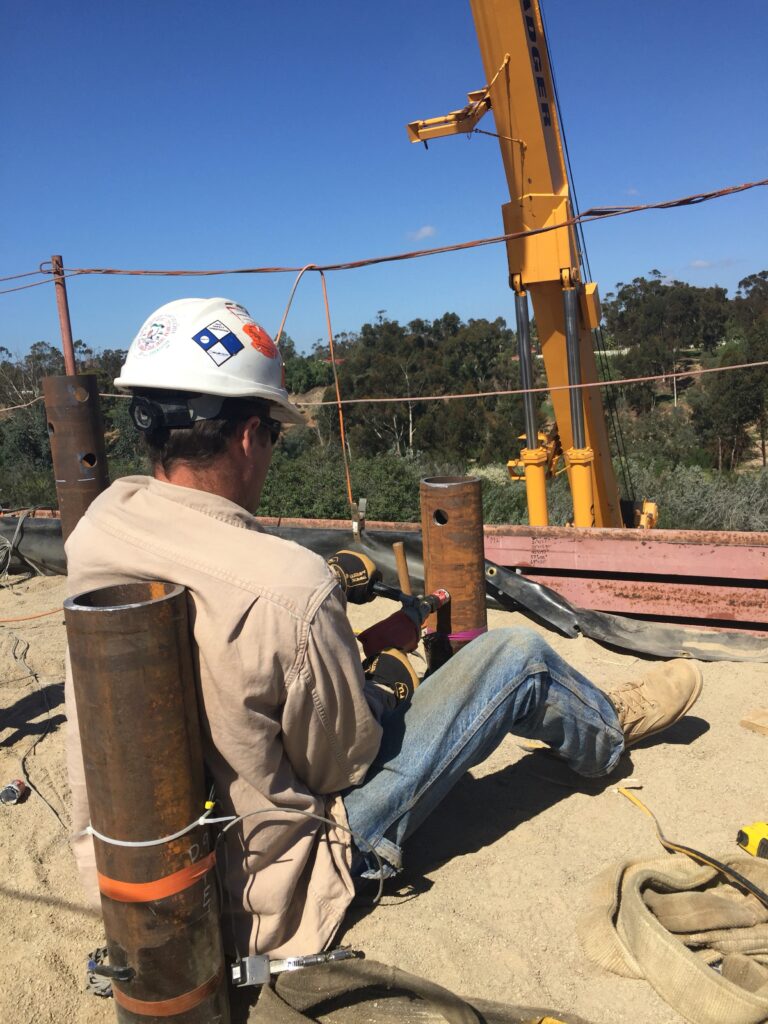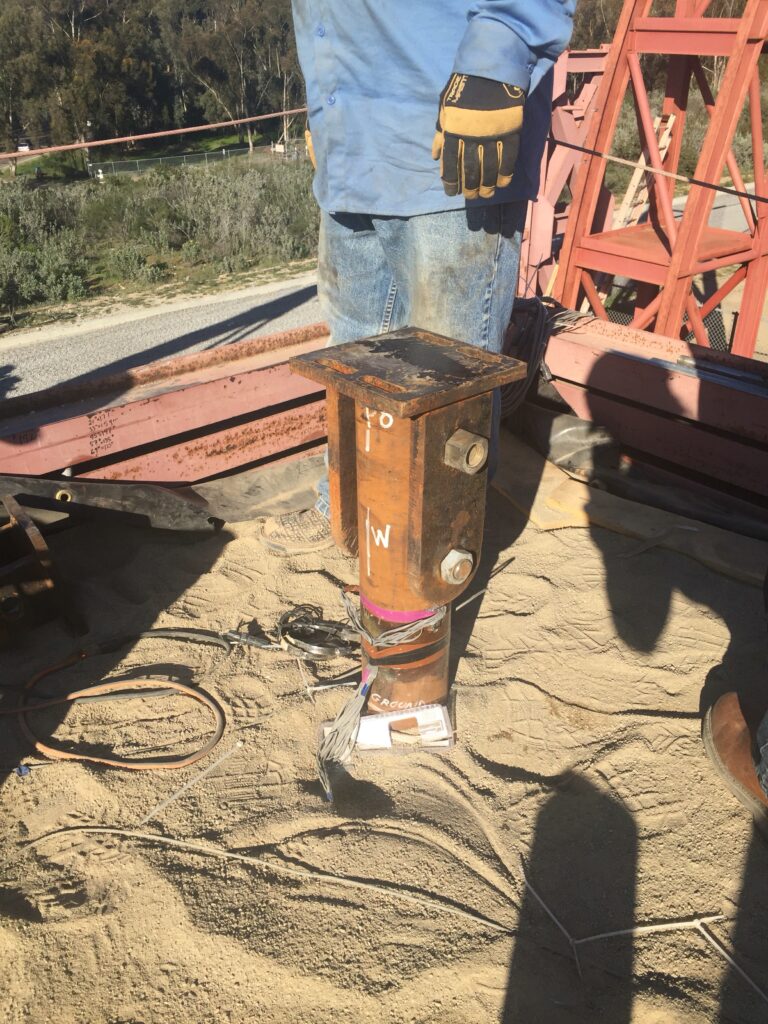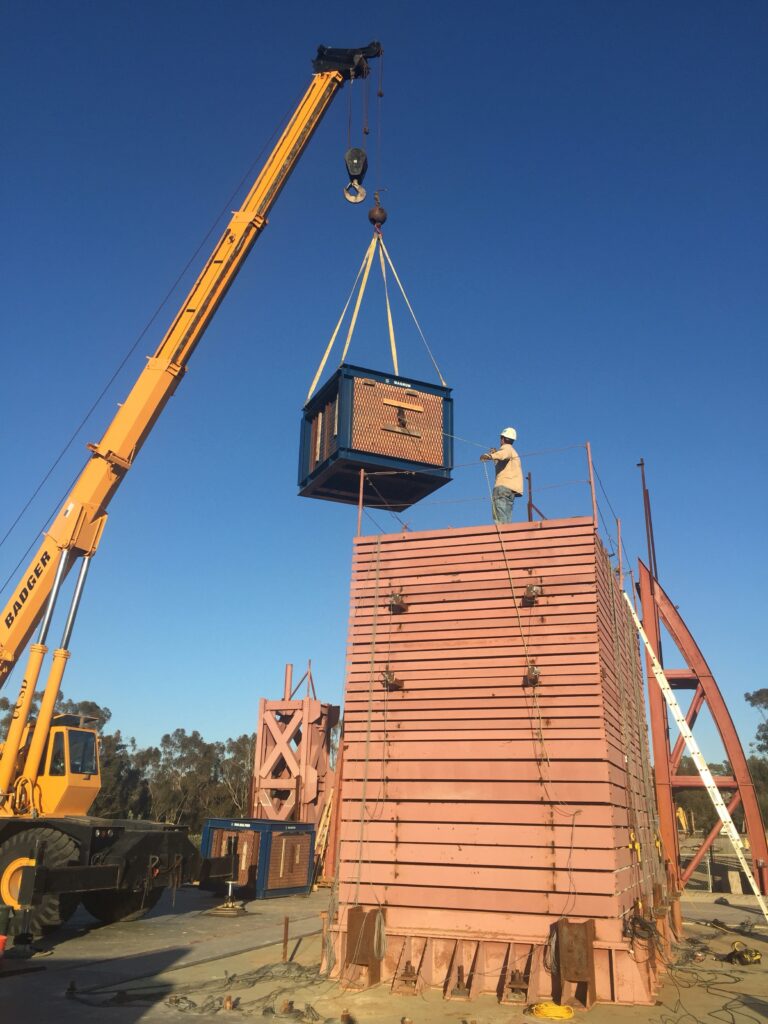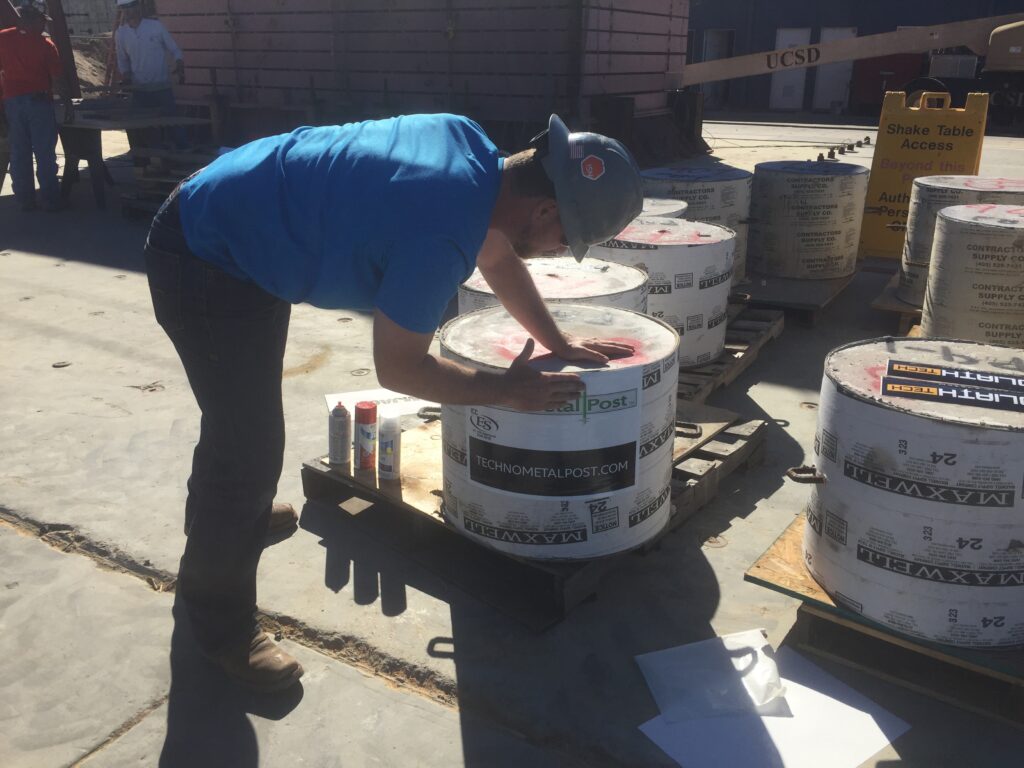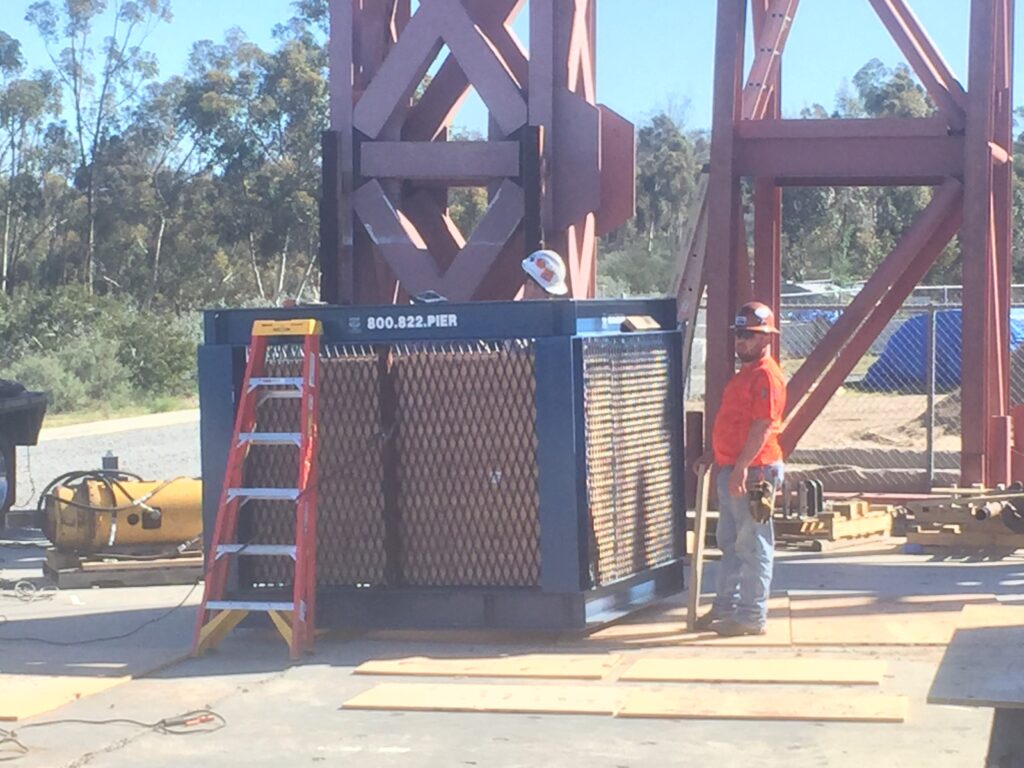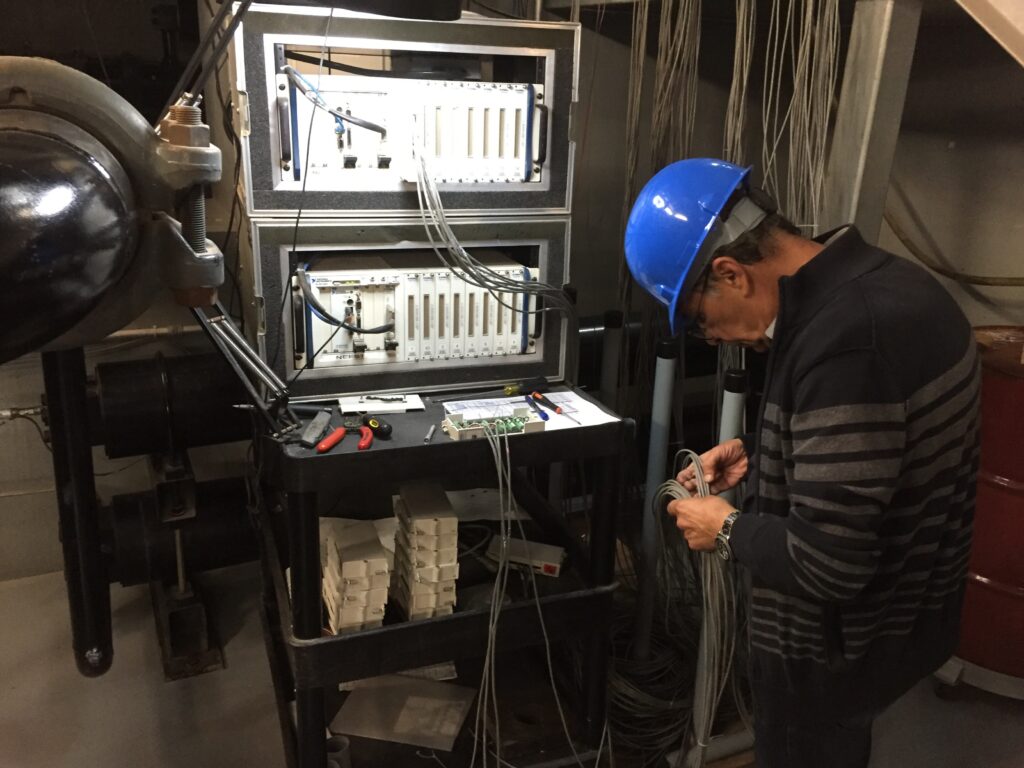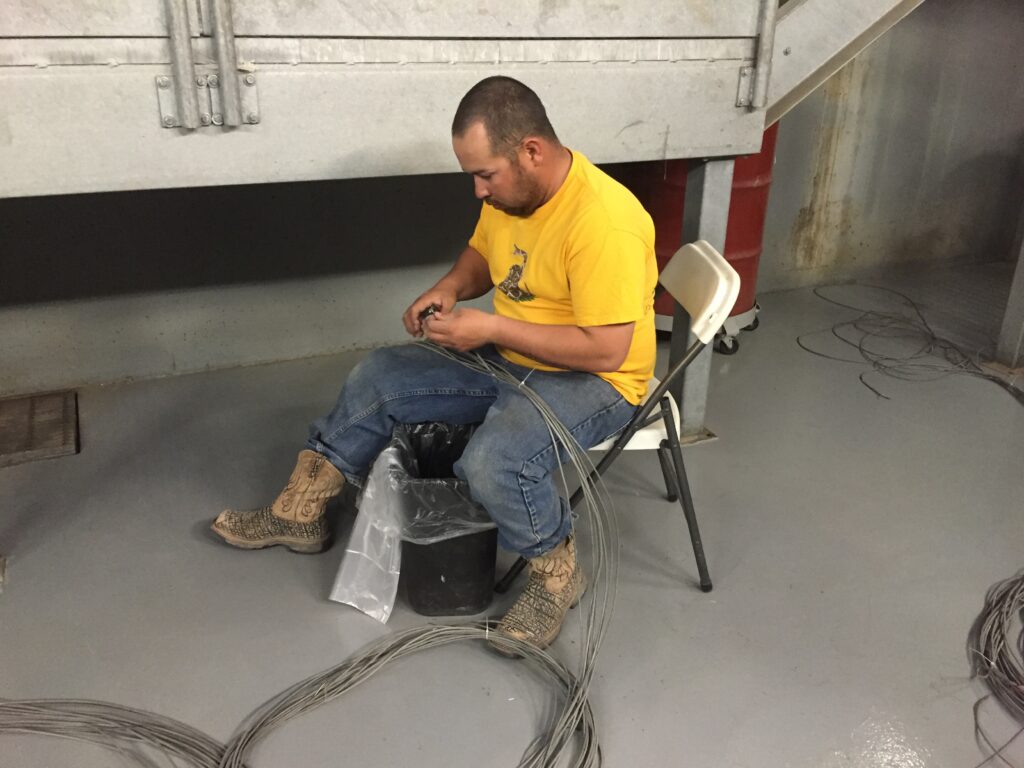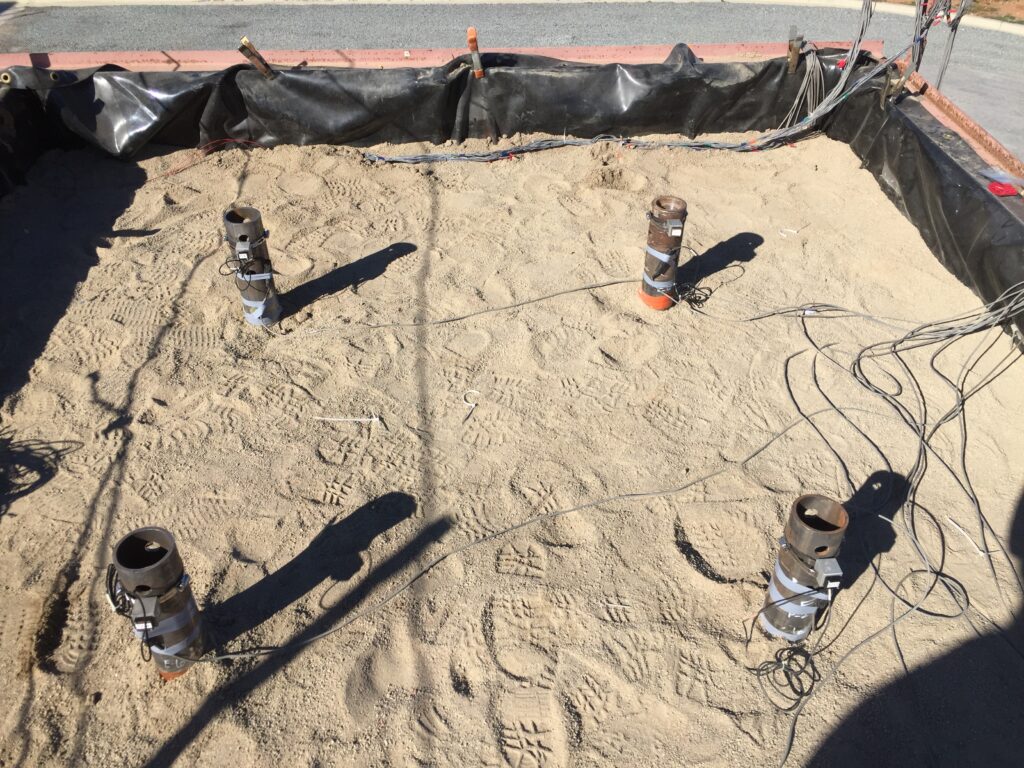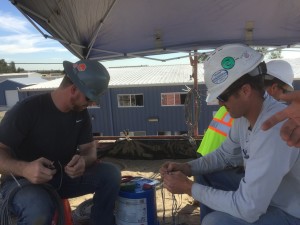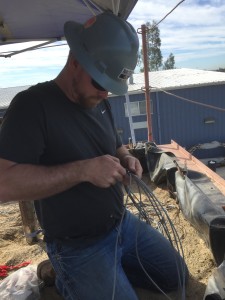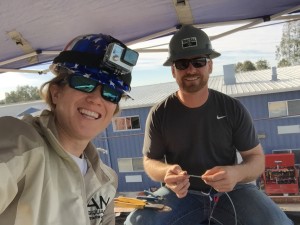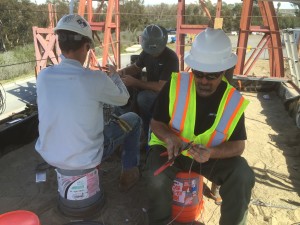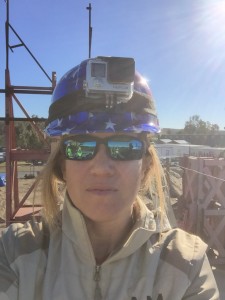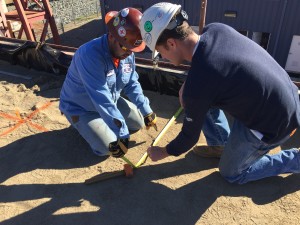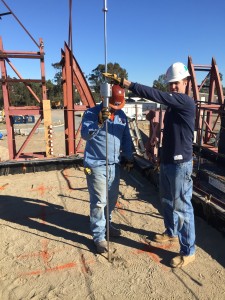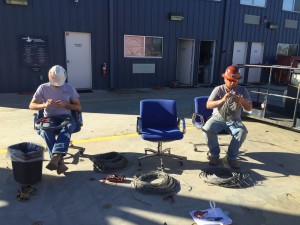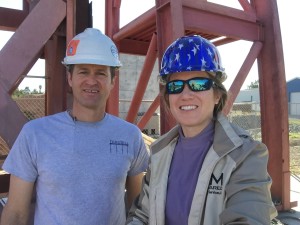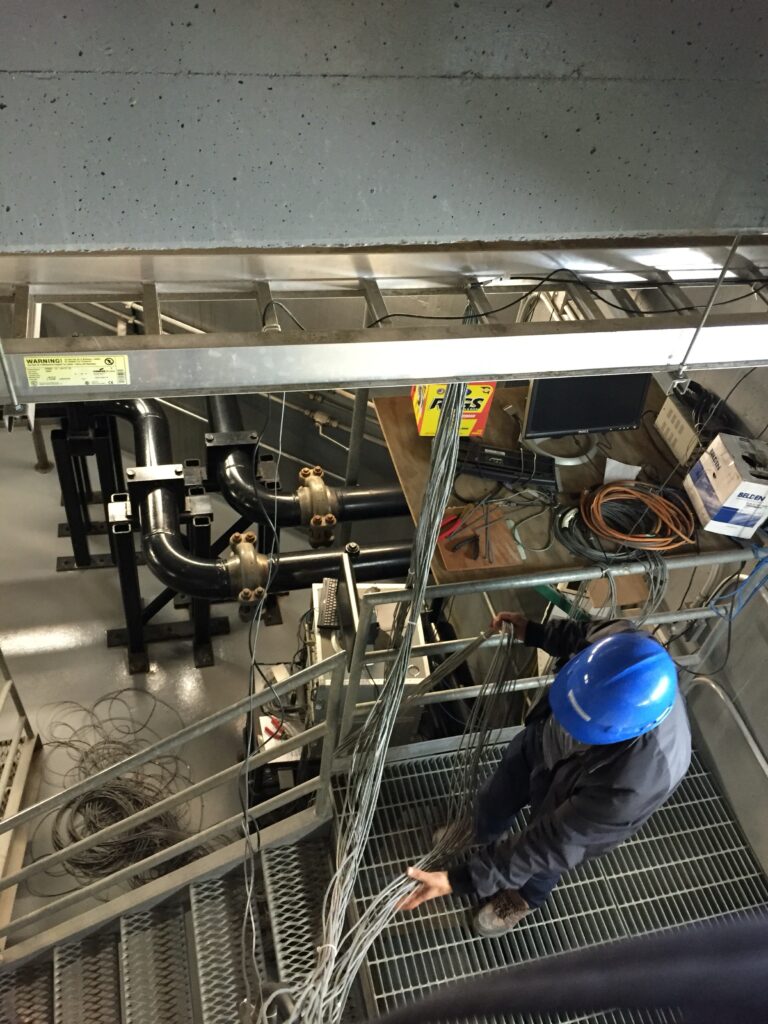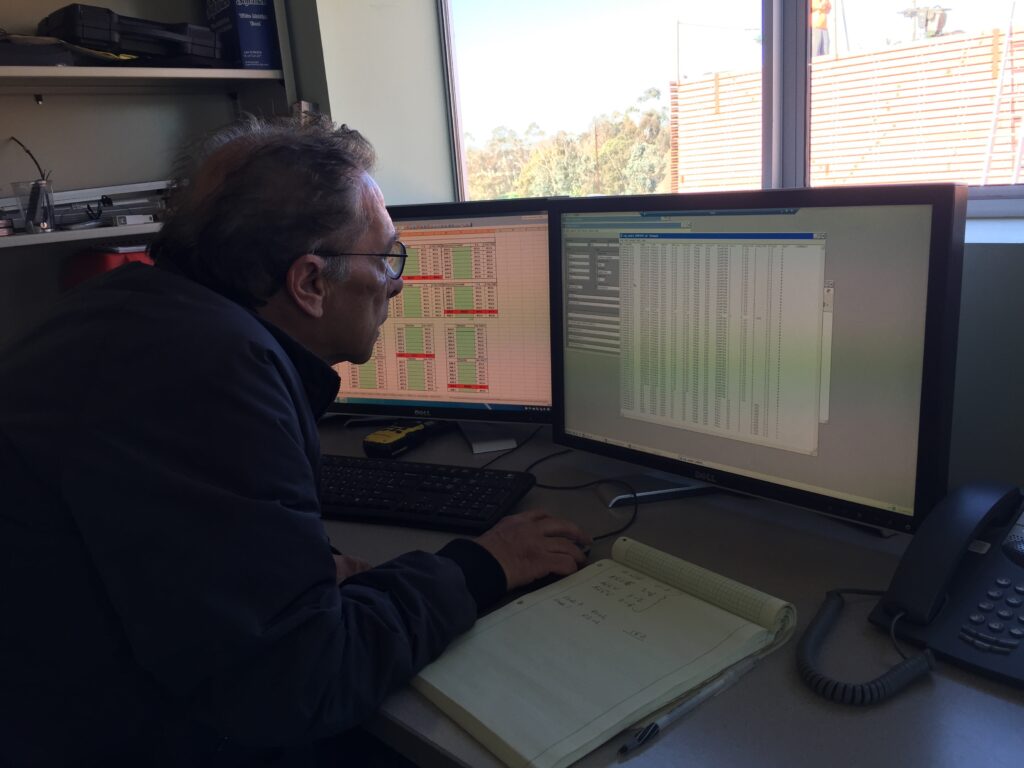We spent a LONG day Friday taking off the concrete donut weights, measuring and drilling lots of pile cap holes and we managed to place one skid around 5:30 pm. Early Saturday morning we placed the second skid and filled them both with sand. Each skid weighs about 3,000 lbs and we filled the 5.5″ pile skid with around 13,000 lbs of sand for a total weight of about 16,000 lb, or 4,000 lbs per pile. On the 3.5″ pile skid we loaded it with about 4,000 lbs of sand plus the skid for a total of roughly 7,000 lbs or 1,750 lbs per pile. During the inertial weight tests we took the 3.5″ piles to 95% of their ultimate bending moment with about 1,600 lbs on the pile, so I did not feel adding much more load was prudent. We’ll see what happens during the Takatori 100% shake!
We should be shaking the skids tomorrow (Monday) in the “fixed” connection condition and then the “pinned” condition Tuesday morning. In the “pinned” condition we take out one bolt from each pile cap and leave one in place. Hopefully we are on tear down mode Tuesday afternoon.
